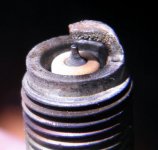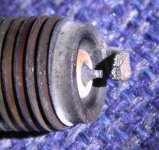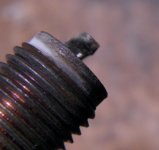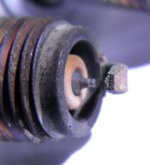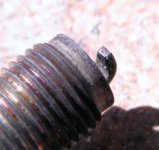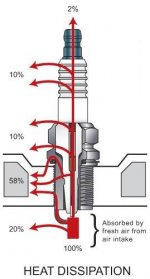I am no spark plug engineer. But I do know that trying to compare Motorcycle to Auto spark plug service intervals is not Apples to Apples. Typical car engines cruise at less than 2k RPM. Our Spyders are usually running at twice that RPM or more. Not to mention, we typically run our motorcycle engines much harder than a typical car.
Iridium is extremely hard (and brittle). Which means you need to be careful when gaping them. And that they wear much slower because of the Iridium.
If you do not use thermal paste, or, you use Anti-Seize on your spark plugs. They will wear out faster on your Spyder/Ryker because they will tend to run hotter than designed. Running your spark plugs too hot will also tend to reduce power and fuel mileage. As you can see below, the thread area of your spark plug is a major heat transfer point. Thermal paste assists in this heat transfer process making it more efficient. Not using thermal paste reduces this heat transfer ability. Using anti-seize (which is an insulator) reduces heat transfer even more than not using anything at all.
View attachment 189984

